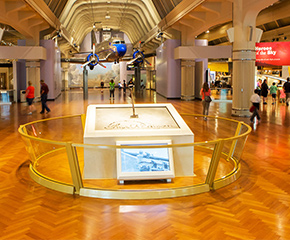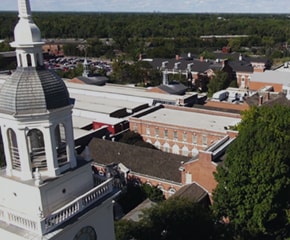Rooster Weathervane, circa 1875
Add to SetSummary
Weathervanes point into the direction of the wind. This helped viewers anticipate weather changes before local forecasts became common after 1920. Functional vanes required a basic pointing device and directional arms, but manufacturers added decorative elements, or ornaments, to appeal to consumer interests. Many churches installed a rooster, or weathercock, atop their spires to convey a moral lesson based in Christian gospels.
Weathervanes point into the direction of the wind. This helped viewers anticipate weather changes before local forecasts became common after 1920. Functional vanes required a basic pointing device and directional arms, but manufacturers added decorative elements, or ornaments, to appeal to consumer interests. Many churches installed a rooster, or weathercock, atop their spires to convey a moral lesson based in Christian gospels.
Artifact
Weathervane
Date Made
circa 1875
Place of Creation
Location
Not on exhibit to the public.
Object ID
30.958.104
Credit
From the Collections of The Henry Ford.
Material
Copper (Metal)
Technique
Gilding (Technique)
Color
Red
Gold (Color)
Dimensions
Height: 28.25 in
Width: 26.5 in
Depth: 3.5 in





